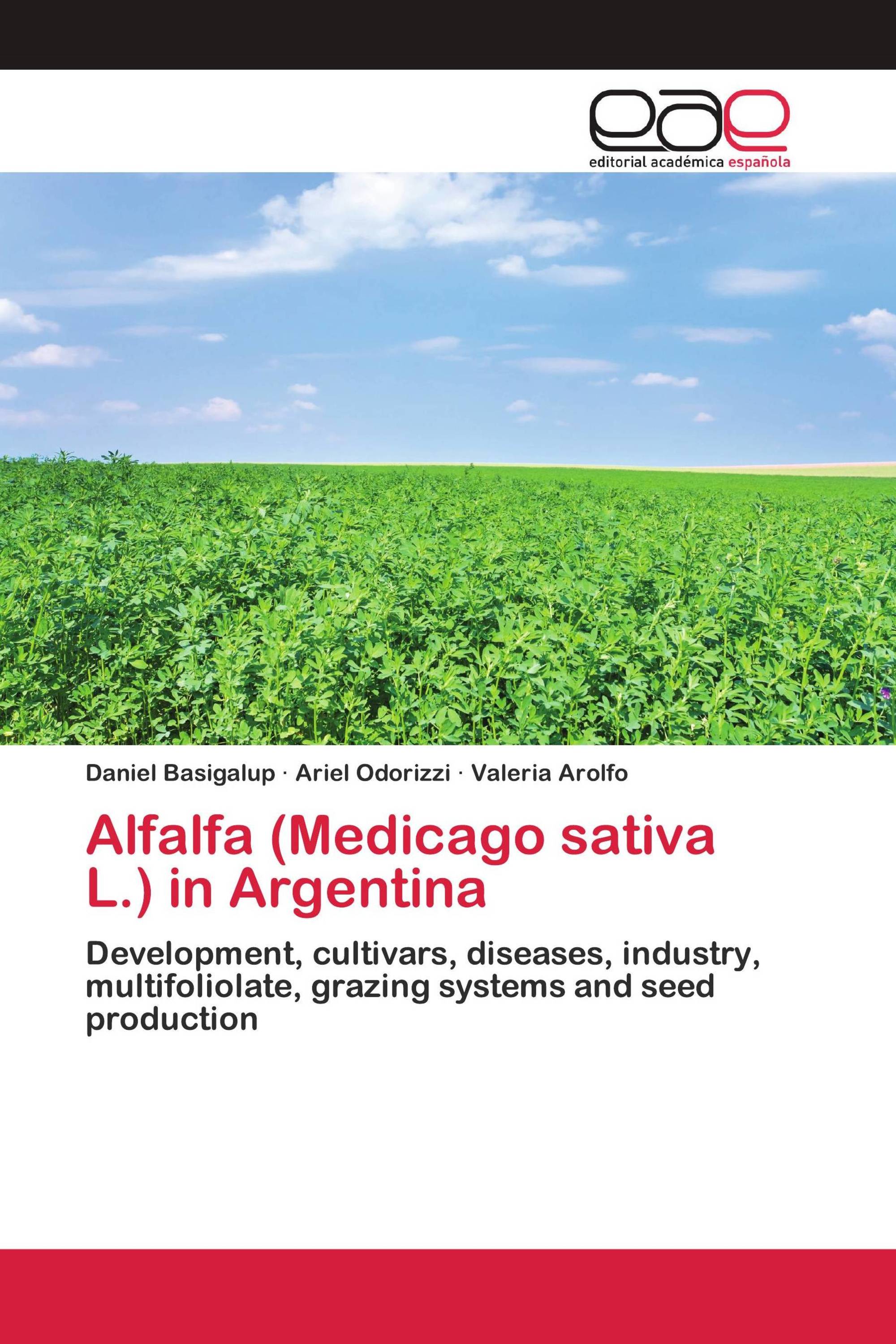Alfalfa (Medicago sativa L.) in Argentina
Development, cultivars, diseases, industry, multifoliolate, grazing systems and seed production
€ 39,90
Alfalfa was introduced in Argentina by the Spaniards in the 17th century and by 1921/1922. At present (2018), with nearly 3.2 million ha, Argentina is one the largest alfalfa producers in the world. Approximately 80% of the total alfalfa area in the country is cultivated under rain fed conditions for dairy, beef and hay production in the Pampas Region, while the remaining 20% is devoted to hay and seed production under irrigation in the Northwestern, Western and Patagonia regions. Direct grazing is still very popular for animal production; however, hay production for both domestic and international markets is becoming increasingly important. In this book, we present an overview of alfalfa development and hay production in Argentina, the most important diseases that affect the crop, some criteria for choosing the cultivar to be planted, important concepts to use alfalfa under rotational grazing, an overview of alfalfa seed production in the country, and the development of an extremely non-dormant variety with a high multifoliolate expression to increase forage quality.
Detalles de libro: |
|
|
ISBN-13: |
978-620-2-12752-3 |
|
ISBN-10: |
620212752X |
|
EAN: |
9786202127523 |
|
Idioma del libro: |
English |
|
By (author) : |
Daniel Basigalup |
|
Número de páginas: |
76 |
|
Publicado en: |
23.10.2020 |
|
Categoría: |
Agriculture, horticulture, forestry, fishery, nutrition |
